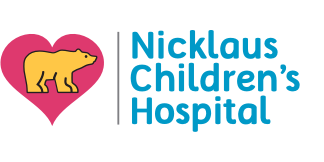- Parents Home
- Para Padres
- Allergy Center
- Asthma Center
- Cancer Center
- Diabetes Center
- Diseases & Conditions
- Doctors & Hospitals
- Emotions & Behavior
- First Aid & Safety
- Flu Center
- Food Allergy Center
- General Health
- Growth & Development
- Heart Health
- Homework Help Center
- Infections
- Newborn Center
- Nutrition & Fitness Center
- Play & Learn Center
- Pregnancy Center
- Q&A
- Recipes
- School & Family Life
- Sports Medicine Center
- Videos
- Kids Home
- Para Niños
- Asthma Center
- Cancer Center
- Diabetes Center
- Feelings
- Getting Help
- Health Problems
- Health Problems of Grown-Ups
- Heart Center
- Homework Center
- How the Body Works
- Illnesses & Injuries
- Kids' Medical Dictionary
- Movies & More
- Nutrition & Fitness Center
- Puberty & Growing Up
- Q&A
- Recipes & Cooking
- Relax & Unwind Center
- Stay Safe Center
- Staying Healthy
- Staying Safe
- Videos
- Teens Home
- Para Adolescentes
- Asthma Center
- Be Your Best Self Center
- Cancer Center
- Diabetes Center
- Diseases & Conditions
- Drugs & Alcohol
- Expert Answers (Q&A)
- Flu Center
- Homework Help Center
- Infections
- Managing Your Medical Care
- Managing Your Weight
- Nutrition & Fitness Center
- Recipes
- Safety & First Aid
- School & Work
- Sports Center
- Stress & Coping Center
- Videos
- Your Body
- Your Mind
A to Z: Obstructive Sleep Apnea
May also be called: OSA, Obstructive Apnea
Obstructive Sleep Apnea (AP-nee-uh) is a sleep disorder that causes a person to stop breathing temporarily during sleep.
More to Know
During sleep, everyone has brief pauses in their breathing pattern called apneas. Usually this is completely normal. Sometimes, though, apneas may be be longer and happen often, making breathing irregular and abnormal. There are three types of apnea: obstructive, central, and mixed. Obstructive apnea is caused by an obstruction of the airway (such as enlarged tonsils and adenoids). This is most likely to happen during sleep because that’s when the soft tissue at the back of the throat is most relaxed.
The most common symptom of obstructive sleep apnea is snoring followed by pauses or gasping. Other symptoms include labored breathing while sleeping, restless sleep, sleeping in unusual positions, and daytime sleepiness. If it goes untreated, obstructive sleep apnea can eventually lead to heart problems.
Treatment for obstructive sleep apnea involves keeping the throat open to aid air flow, such as with adenotonsillectomy (surgical removal of the tonsils and adenoids) or continuous positive airway pressure (CPAP), which is delivered by having someone wear a nose mask while sleeping.
Keep in Mind
Although extended pauses in breathing can be serious, after a doctor does a complete evaluation and makes a diagnosis, most cases of apnea can be treated or managed with surgery, medicine, or monitoring devices. Many cases of apnea go away on their own.
All A to Z dictionary entries are regularly reviewed by KidsHealth medical experts.

© 1995- The Nemours Foundation. KidsHealth® is a registered trademark of The Nemours Foundation. All rights reserved.
Images sourced by The Nemours Foundation and Getty Images.

